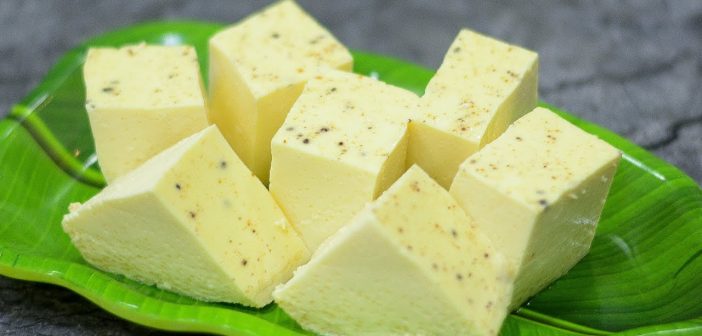Kharvas, a traditional milk-based dessert from Pune, has been a beloved sweet delicacy in Maharashtra for generations. Known for its soft, custard-like texture and mildly sweet flavor, Kharvas is made from the colostrum of cows or buffaloes, a nutrient-rich first milk produced shortly after giving birth. This unique dessert has deep cultural roots in Maharashtra and Goa, with variations in preparation methods and flavors across different regions of India.
Origins of Kharvas
The word “Kharvas” is derived from the Marathi language, meaning “the first milk after delivery.” Traditionally, Kharvas has been prepared in rural Maharashtrian homes as a wholesome and protein-rich dessert. Colostrum milk, being thicker and more nutrient-dense than regular milk, forms the base of this dish, giving it its distinctive gelatinous texture.
Historically, Kharvas was prepared after cows or buffaloes calved, ensuring the milk wasn’t wasted. It was then sweetened with jaggery or sugar and flavored with cardamom and saffron, steamed to create a soft, cake-like consistency. The dish is a symbol of fertility and abundance and is often served at festivals and special occasions.
Preparation Method
To make Kharvas, colostrum milk is mixed with regular milk, jaggery (or sugar), and flavored with spices such as cardamom, nutmeg, and saffron. The mixture is poured into a container and steamed until it sets into a soft, wobbly pudding. Its preparation does not require any elaborate steps or advanced cooking techniques, which is why it remains a popular homemade dessert across Maharashtra.
Variants of Kharvas Across India
- Pune and Maharashtra
In Pune and other parts of Maharashtra, Kharvas is traditionally prepared with cow or buffalo colostrum and flavored with local spices like cardamom and nutmeg. The texture is creamy yet firm, and it is often served chilled. Sweeteners can range from jaggery to white sugar, and variations include the use of saffron to add both color and a rich aroma. - Goa
In Goa, Kharvas is known as “Duddal” or “Posu”, maintaining a similar method of preparation but with slight regional adaptations. Goan versions often have a more pronounced coconut flavor due to the addition of coconut milk, reflecting the state’s affinity for coconut-based dishes. Local sweeteners, such as palm jaggery, are sometimes used, giving it a more caramelized taste. The dish is also commonly served during festivals like Ganesh Chaturthi and local fairs. - Karnataka
Kharvas in Karnataka is called “Ginnu” or “Junnu” and is popular in rural households. Similar to the Maharashtrian version, it is prepared using cow or buffalo colostrum. However, the flavor profile in Karnataka leans toward the use of jaggery rather than sugar, giving it a deeper, more robust sweetness. Ginnu is also sometimes enhanced with mild spices like cinnamon or vanilla essence. - Tamil Nadu
In Tamil Nadu, a variant of Kharvas is called “Seem Paal”, which translates to colostrum milk. The dessert here is simpler, typically flavored only with sugar and sometimes cardamom. The texture of Seem Paal tends to be softer and more delicate compared to its northern counterparts. It’s often offered as a ceremonial dish during auspicious events.
Nutritional Value and Cultural Significance
The primary ingredient in Kharvas, colostrum, is rich in proteins, vitamins, and antibodies, which makes it highly nutritious. Traditionally, it was served to new mothers and young children to boost immunity and health. In rural settings, Kharvas is viewed not only as a dessert but also as a vital part of local food culture, symbolizing nourishment and family bonds.
Popularity and Modern Adaptations
In urban areas like Pune, Kharvas is now commercially available in dairy shops and markets, catering to modern consumers. While traditionalists still prefer making it at home, the convenience of ready-made Kharvas has widened its reach. Some modern versions use substitutes like condensed milk and agar-agar to mimic the texture of colostrum milk, making the dessert accessible even in regions where colostrum isn’t readily available.
Gourmet versions have also surfaced, with chefs experimenting with flavors like vanilla, chocolate, or even fruit infusions, while still retaining the authentic essence of the dish. The dish’s revival in trendy dessert menus and at festivals has helped it maintain its place as a beloved Indian sweet.
Conclusion
Kharvas, with its rich history and nutritional benefits, remains a staple dessert in Maharashtra and beyond. Its variants across Goa, Karnataka, and Tamil Nadu show how regional flavors have adapted this humble dish, making it unique to each area. Despite modern tweaks, the traditional Kharvas continues to be cherished as a dessert that represents nourishment, comfort, and cultural heritage. As it finds its place in urban and rural kitchens alike, Kharvas stands as a testament to India’s diverse culinary landscape.





